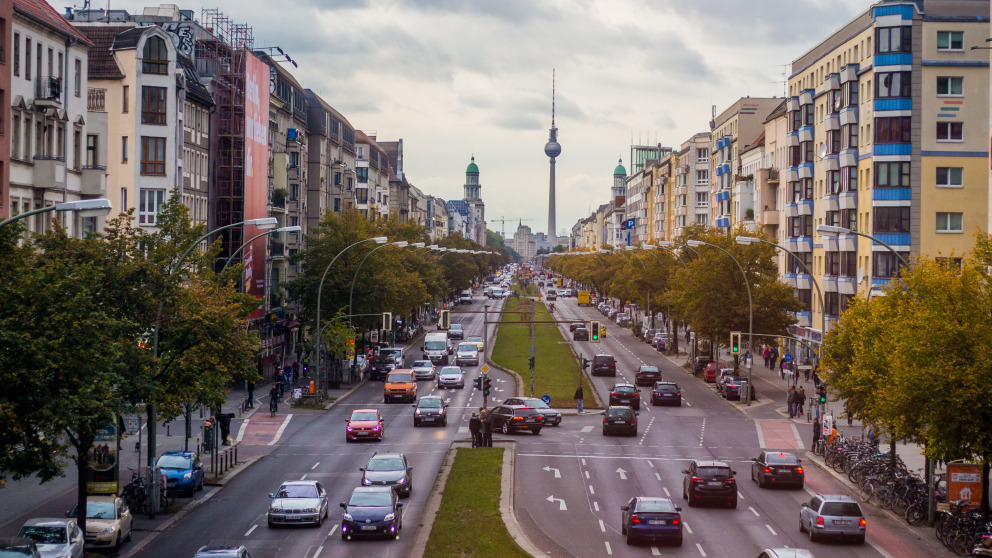Nitrogen Oxide Emissions Significantly Underestimated in Berlin
05.07.2018
New study shows how air pollution can be calculated more accurately.

Current estimates of nitrogen oxide (NOx) emissions in Berlin may be far too low. A new study concludes that average annual emissions are around twice as high as suggested by a frequently used emissions inventory, with inner-city areas experiencing levels three times higher than assumed on weekdays. “The values in the TNO-MACC III emissions inventory are compiled from Germany’s reports to the European Union and are similar to the Berlin Senate Administration’s emissions estimates. As such, they are relevant for policymaking in this area. Our study shows how emissions could be calculated more accurately,” explains lead author Friderike Kuik, who worked on the study during her time at the IASS.
Motor vehicles – particularly diesel cars – are one of the main sources of nitrogen oxides (NOx), the umbrella term for nitric oxide (NO) and nitrogen dioxide (NO2). NO2 is highly toxic to both people and the environment.
Emissions factors need to be revised
The study, which was published in the journal Atmospheric Chemistry and Physics, is based on calculations using the high-resolution chemical transport model WRF-Chem. The calculations were made on the basis of values from the emissions inventory that are included in the model. A comparison of the model results with measured NOx concentrations shows that the values of the model are lower, particularly on weekdays when the volume of traffic is higher. The authors of the study tried to explain the model inaccuracies and, based on their findings, estimated the correction factors that would lead to more realistic results. “The estimates are well founded, but need to be consolidated in further research,” underlines Tim Butler, co-author of the study and leader of the IASS project Air Quality Modelling for Policy Advice.
It would be particularly important to review the way road traffic emissions are calculated. “There are some indications that the emission factors – i.e. how much nitrogen oxide is emitted per kilometre driven – need to be recalculated. These factors are standardised throughout Europe and published in the Handbook Emission Factors for Road Transport. But they are determined on the basis of a quiet driving style, and this does not always correspond to reality,” says Butler. So more realistic emission factors that take account of different driving styles could lead to more accurate estimates of emissions.
More measurements in higher air layers
The authors also suggest that more measurements in higher layers of the air could bring more clarity – there is still a lack of research on the vertical mixing of emitted nitrogen oxides. Depending on weather conditions, the different layers of the air mix to a greater or lesser extent. This means that the length of time air pollutants remain at ground level varies considerably. More and better data on the mixing of pollutants in higher air layers could help us to understand further model inaccuracies – and this would enable us to make more reliable estimates of correction factors for emissions.
Kuik, F., Kerschbaumer, A., Lauer, A., Lupascu, A., von Schneidemesser, E., and Butler, T. M.: Top–down quantification of NOx emissions from traffic in an urban area using a high-resolution regional atmospheric chemistry model, Atmos. Chem. Phys., 18, 8203–8225, 2018.
